Troubleshooting electrical | problems in heaters

When electrical problems affect your heating system, it can leave you in the cold and potentially create safety hazards. This comprehensive guide helps you identify common electrical issues, understand their causes, and know when DIY solutions are appropriate versus when to call a professional.
Troubleshooting electrical problems in heaters
Electrical issues with your heating system can be both frustrating and concerning. While some problems might be as simple as a tripped circuit breaker, others could indicate more serious electrical malfunctions that require professional attention. Understanding the basics of your heating system’s electrical components can help you make informed decisions about repairs and maintenance, potentially saving you time and money while ensuring your family’s safety and comfort.
Remember that electricity can be dangerous, and many heating system repairs should only be performed by qualified professionals. This guide will help you identify common problems, perform safe basic troubleshooting, and recognize when it’s time to call in an expert. We’ll explore everything from simple power issues to complex wiring problems, ensuring you can make informed decisions about your heating system’s care.
Your fridge is a kitchen superstar as it keeps all your food fresh and drinks cold.
But does the fridge feel warm when you open it?
Is there water all over the floor?
Fridge issues are the worst!
Common Electrical Problems and Their Signs
Power Supply Issues
One of the most frequent electrical problems starts right at the power source. A heater that won’t turn on might be experiencing basic power supply problems. Before assuming the worst, check your circuit breaker panel. Circuit breakers can trip due to power surges, overloaded circuits, or short circuits. While resetting a breaker is simple, repeated tripping indicates a more serious underlying issue that requires professional investigation.
Thermostat Malfunctions
Your thermostat serves as the control center for your heating system. When electrical problems affect your thermostat, your entire system can malfunction. Common signs of thermostat electrical issues include:
- Blank or flickering display
- Inconsistent temperature readings
- The system not responding to setting changes
- Constant cycling on and off
- Incorrect temperature regulation
Wiring Problems
Faulty wiring can cause numerous heating system problems and pose serious safety risks. Signs of potential wiring issues include burning smells, unusual noises from your heater, or lights dimming when the system starts. Never attempt to inspect or repair wiring yourself – this is strictly professional territory.
Safe Troubleshooting Steps
Initial Power Check
Before diving into complex troubleshooting, start with the basics. Ensure your system is receiving power by checking these essential points:
First, verify that the unit’s power switch is in the “ON” position. Next, check your circuit breaker panel for any tripped breakers related to your heating system. If you find a tripped breaker, reset it once. However, if it trips again immediately, stop and contact a professional, as this indicates a serious electrical problem.
Thermostat Evaluation
When your thermostat seems to be the culprit, start with a basic evaluation. Ensure it’s receiving power and set to “HEAT” mode with a temperature setting above the current room temperature. For battery-operated thermostats, try replacing the batteries with fresh ones. If these steps don’t resolve the issue, more complex electrical problems might be at play.
Professional Inspection Points
Professional electricians and HVAC technicians will examine several crucial areas when diagnosing electrical problems. They’ll check the condition of your system:
- Motor components and capacitors
- Heating element connections
- Safety switches and controls
- Main electrical connections
- Internal circuit board
Maintenance and Prevention
Regular maintenance is crucial for preventing electrical problems in your heating system. Schedule annual professional inspections before the heating season begins. During these inspections, technicians can identify worn components, loose connections, and other potential issues before they cause system failures.
When to Call a Professional
While some basic troubleshooting is safe for homeowners, many electrical problems require professional attention. Contact a qualified technician immediately if you experience:
- Burning smells from your heating system
- Frequent circuit breaker trips
- Unusual noises when the system operates
- Signs of electrical damage or burning
- Multiple system components failing
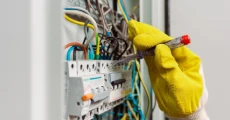
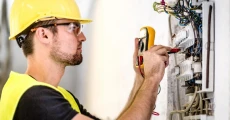
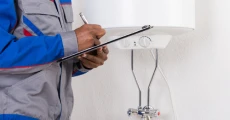
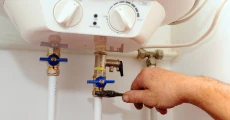
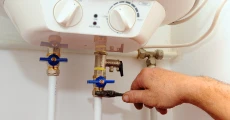
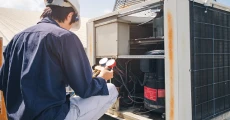
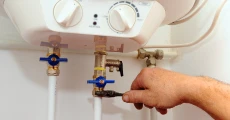
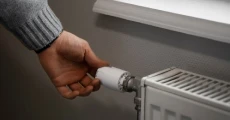
The Bottom Line
Electrical problems in heating systems can range from simple fixes to complex repairs requiring professional expertise. While basic troubleshooting is often safe and appropriate, never risk your safety by attempting electrical repairs yourself.
Trust CLT Appliance Repair for all your heating system electrical needs. Our certified technicians use advanced diagnostic tools to quickly identify and resolve electrical issues. With our 24/7 emergency heating repair charlotte nc service and comprehensive electrical safety inspections, we ensure your heating system operates safely and efficiently all season long.
Frequently Asked Questions
Yes, power surges can damage sensitive electronic components in modern heating systems. Consider installing a surge protector for your HVAC system.
Common signs include humming sounds, slow motor start-up, or the system shutting off unexpectedly.
Circuit boards typically last 10-15 years but can fail earlier due to power surges or environmental factors.
While many smart thermostats work with existing wiring, some advanced features may require additional wiring configuration.
Yes, even minor electrical issues can force your system to work harder, increasing energy consumption and reducing efficiency.
Don't let a malfunctioning Heater disrupt your daily life. Contact CLT Appliance Repair today at 704-606-9043 to schedule your Heater repair service.
We'll have your Heater back to optimal performance in no time!
Dryer Repair Charlotte NC | Washing Machine Repair Charlotte NC | Refrigerator Repair Charlotte NC | Microwave Oven Repair Charlotte NC | Freezer Repair Charlotte NC | Dryer Vent Cleaning Charlotte NC | Dishwasher Repair Charlotte NC | Cooktop Repair Charlotte NC | Stove Repair Charlotte NC | Charlotte Ice Maker Repair | Garbage Disposal Repair Charlotte NC | Plumbing Repair Charlotte NC | Water Heater Repair Charlotte NC
Admiral Appliance Repair | Amana Appliance Repair | Bosch Appliance Repair | Electrolux Appliance Repair | Frigidaire Appliance Repair | General Electric Appliance Repair | Haier Appliance Repair | Hotpoint Appliance Repair | Jenn-Air Appliance Repair | Kenmore Appliance Repair | KitchenAid Appliance Repair | LG Appliance Repair | Magic Chef Appliance Repair | Maytag Appliance Repair | Roper Appliance Repair | Samsung Appliance Repair | Speed Queen Appliance Repair | Whirlpool Appliance Repair | Dacor Appliance Repair | Viking Appliance Repair | Thermador Appliance Repair | Sub-Zero Appliance Repair | Wolf Appliance Repair | Monogram Appliance Repair | Bertazonni Appliance Repair | BlueStar Appliance Repair | Thor Appliance Repair | Miele Appliance Repair | Cafe Appliance Repair | GE Appliance Repair
Freezer Repair Indian Land SC | Freezer Repair Indian Trail NC | Freezer Repair Pineville NC | Freezer Repair Rock Hill SC | Freezer Repair Belmont NC | Freezer Repair Matthews NC | Freezer Repair Lancaster SC | Freezer Repair Cornelius NC | Freezer Repair Fort Mill SC | Freezer Repair Concord NC | Freezer Repair Denver NC | Freezer Repair Monroe NC | Freezer Repair Mooresville NC | Freezer Repair Harrisburg NC | Freezer Repair Lake Wylie SC | Freezer Repair Huntersville NC | Freezer Repair Kannapolis NC | Freezer Repair Mint Hill NC | Freezer Repair Waxhaw NC | Freezer Repair Troutman NC | Freezer Repair Davidson NC | Freezer Repair Gastonia NC | Freezer Repair Charlotte NC

